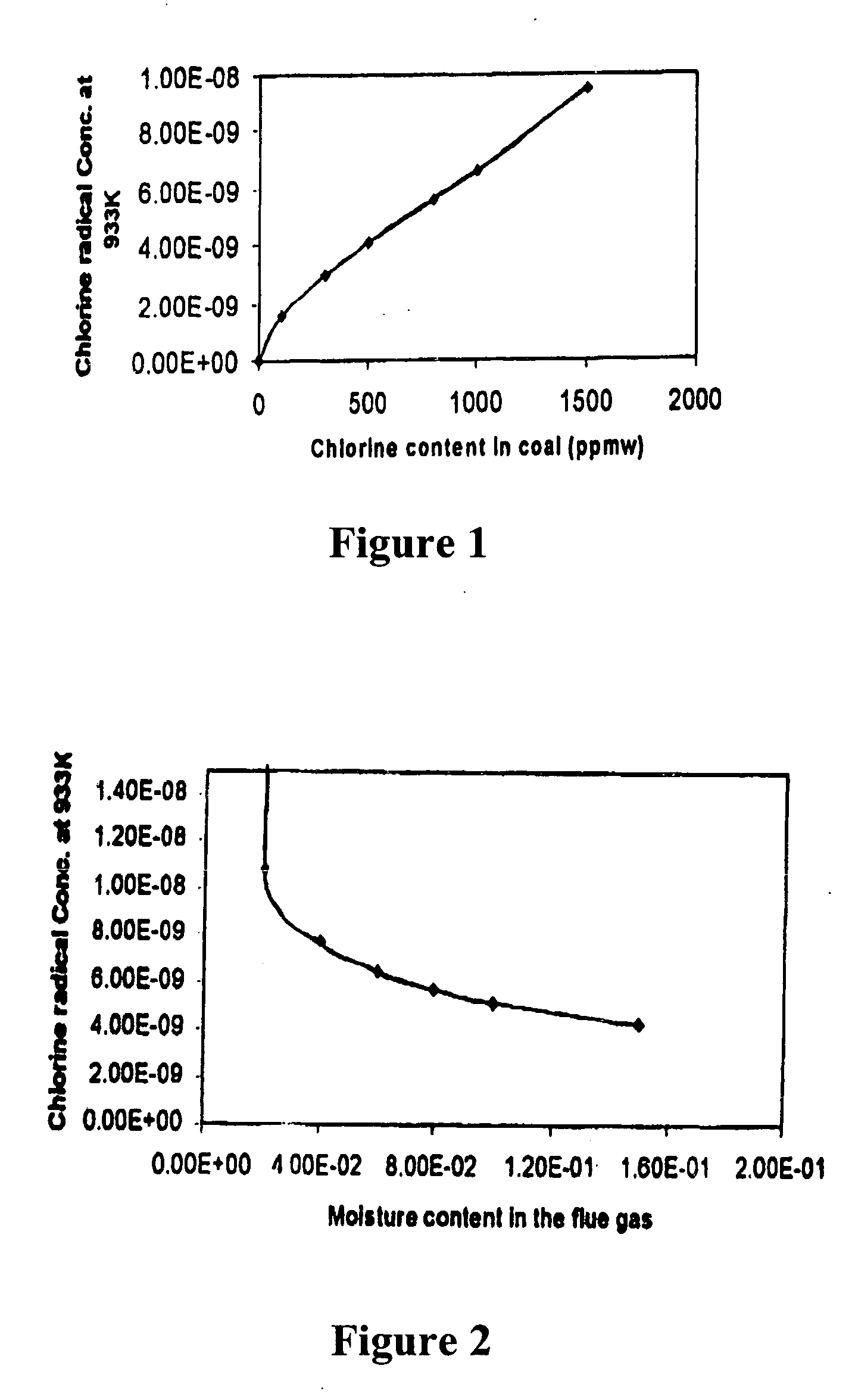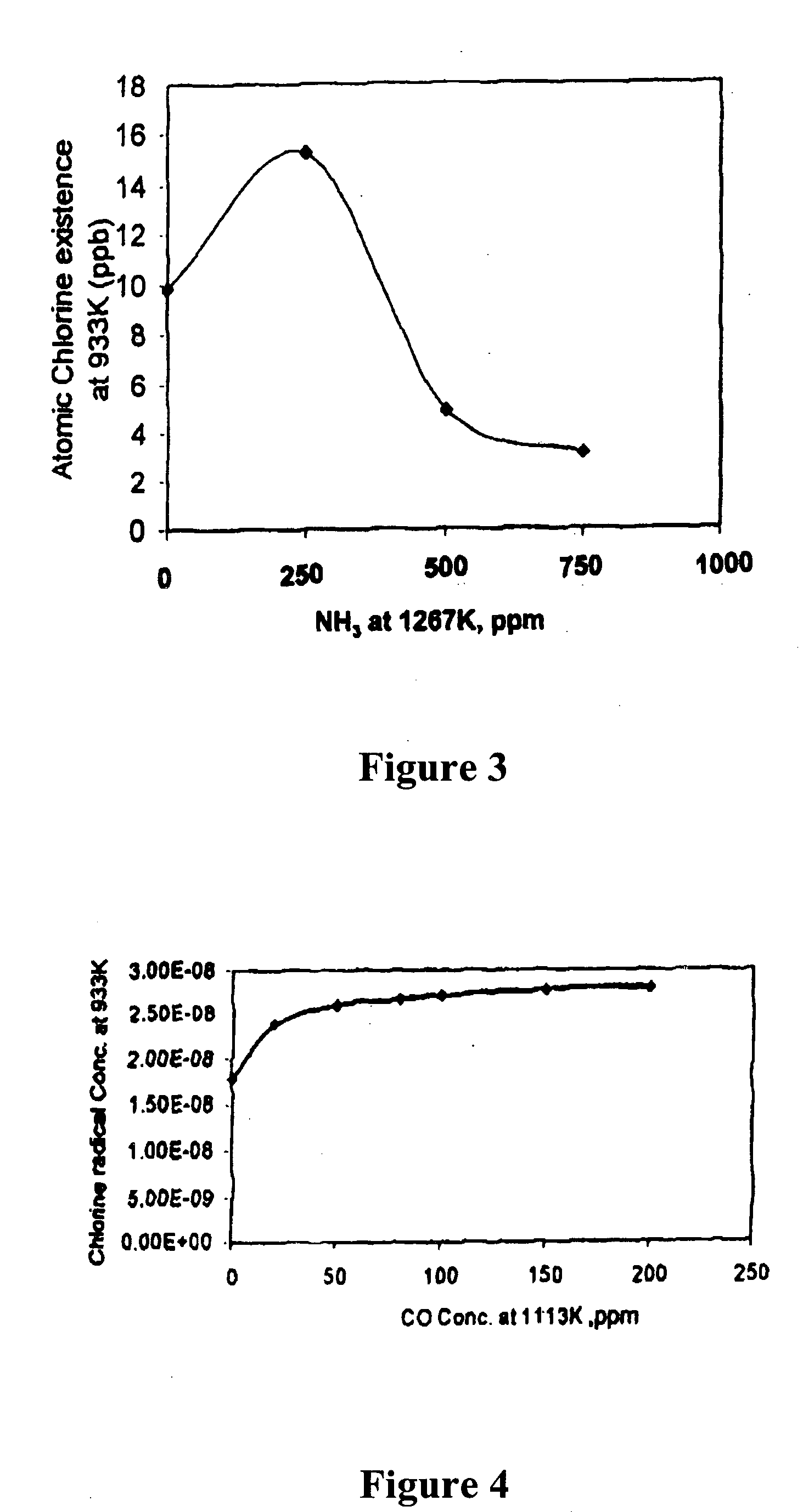Control of mercury and other elemental metal emissions using reaction stabilization device
- Summary
- Abstract
- Description
- Claims
- Application Information
AI Technical Summary
Benefits of technology
Problems solved by technology
Method used
Image
Examples
Embodiment Construction
[0032] To explain the present process it is first necessary to provide some background information about mercury (Hg). Mercury is a metal that melts at 234K (−38° F.) and boils at 630K (674° F.). As such it can be expected to have a high vapor pressure, relative to many metals. If fact, as experienced by the hatters, the vapor pressure of mercury is sufficient to poison people who are subject to prolonged exposure. However, the oxidized forms Hg+ and Hg++, which are usually present as HgO, HgCl2 or HgCl, have much lower vapor pressure. Thus, it is much easier to collect the oxidized forms that are attached to particulates with the usual particulate collecting devices than it is to collect elemental mercury (Hg) which can be in its vapor or gaseous form at flue gas temperatures.
[0033] We provide a method to control the emissions of mercury (Hg) from combustion processes. It will control the emissions of mercury by promoting the oxidization of mercury to Hg++ or to Hg+. The oxidized ...
PUM
| Property | Measurement | Unit |
|---|---|---|
| Temperature | aaaaa | aaaaa |
| Temperature | aaaaa | aaaaa |
| Temperature | aaaaa | aaaaa |
Abstract
Description
Claims
Application Information
 Login to View More
Login to View More - R&D
- Intellectual Property
- Life Sciences
- Materials
- Tech Scout
- Unparalleled Data Quality
- Higher Quality Content
- 60% Fewer Hallucinations
Browse by: Latest US Patents, China's latest patents, Technical Efficacy Thesaurus, Application Domain, Technology Topic, Popular Technical Reports.
© 2025 PatSnap. All rights reserved.Legal|Privacy policy|Modern Slavery Act Transparency Statement|Sitemap|About US| Contact US: help@patsnap.com



